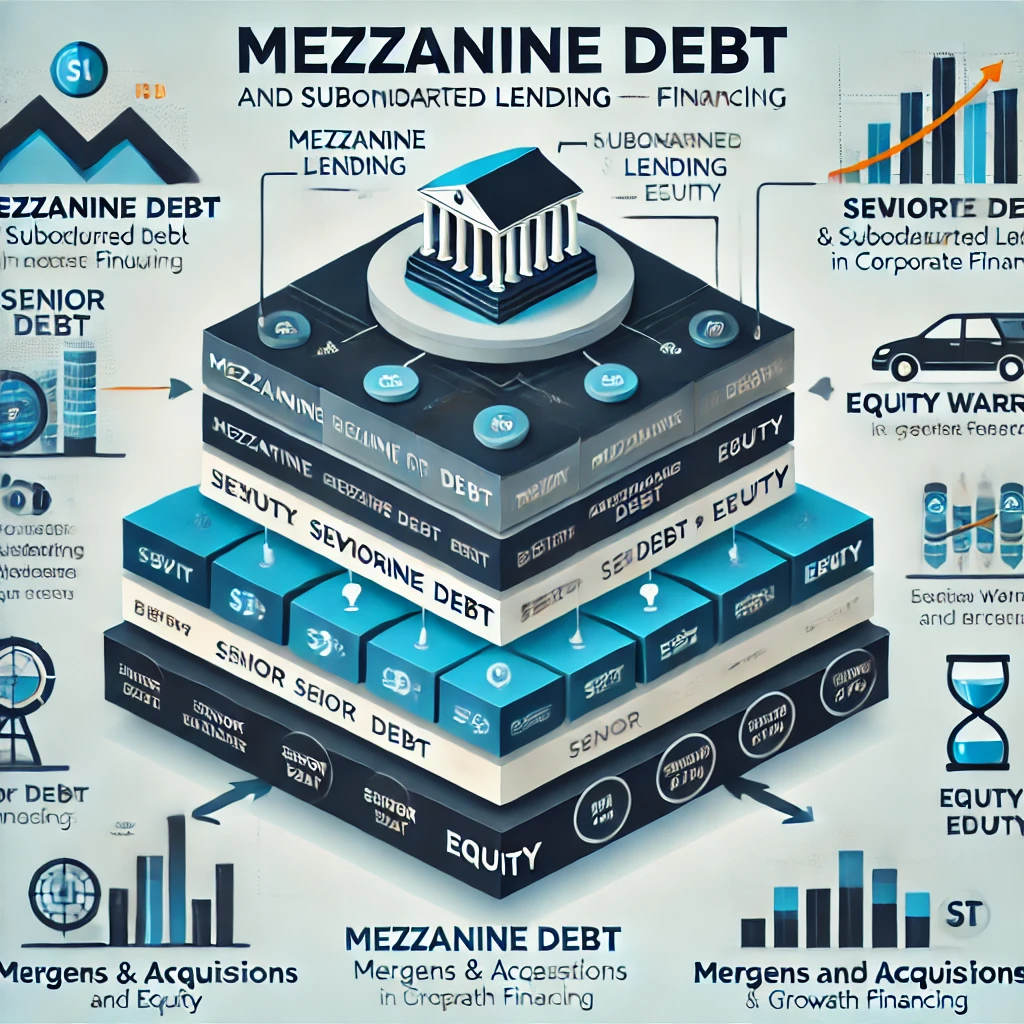In private equity and corporate financing, businesses often need capital beyond what traditional bank loans can provide. Mezzanine debt serves as a hybrid financing tool, blending elements of senior debt and equity to offer flexibility while balancing risk and return. Understanding its structure, repayment priority, and implications in default is key for both borrowers and investors.
What Is Mezzanine Debt?
Mezzanine debt is a form of subordinated debt, meaning it ranks below senior debt in priority if a company faces liquidation. In simpler terms, senior debt gets repaid first, and mezzanine lenders only receive payment after senior obligations are fulfilled. This additional risk translates into higher interest rates, typically between 12% and 20% per year—making it one of the most lucrative forms of debt for lenders.
Key Feature: Equity Warrants
To offset the risk of being subordinated, mezzanine financing often includes equity warrants—an option that allows lenders to convert their debt into ownership in the company. This feature gives lenders upside potential while maintaining flexibility for the borrowing company.
Why Do Companies Use Mezzanine Financing?
Companies turn to mezzanine debt when traditional financing options—such as bank loans or asset-based lending—are either exhausted or too restrictive. Mezzanine financing is commonly used for:
• Mergers & Acquisitions (M&A)
• Business Expansion & Growth
• Management & Shareholder Buyouts
• Leveraged Buyouts (LBOs)
• Refinancing or Capital Restructuring
One major advantage of mezzanine financing is that it reduces the amount of equity a company needs to issue, allowing founders and existing investors to maintain greater ownership while still accessing capital for growth.
Types of Mezzanine Debt & Repayment Structure in Default
The specific structure of mezzanine debt varies, and its repayment order in case of default depends on the type of debt. Below are the common structures:
1. Subordinated Debt + Equity Kicker (Warrants)
• Repayment Order in Default: Paid after senior debt but ahead of preferred equity. If converted to equity, repayment depends on liquidation value.
• Common Use: Private equity deals, growth-stage companies, and leveraged buyouts.
2. Subordinated Debt + Co-Investment Tag in Equity
• Repayment Order in Default: Similar to the structure above—lenders receive proceeds after senior debt holders. If co-invested, they share risk with equity holders.
• Common Use: Private equity-backed companies and late-stage startups.
3. Subordinated Debt Without Equity Participation
• Repayment Order in Default: Paid after senior loans but before any form of equity (preferred/common).
• Common Use: Businesses with strong cash flow but no intention of offering ownership to lenders.
4. Convertible Debt Option
• Repayment Order in Default: Initially treated as debt (subordinated to senior loans), but if converted to equity, it follows equity liquidation order.
• Common Use: Growth-stage companies expecting valuation increases.
5. Preferred Shares (Quasi-Mezzanine Financing)
• Repayment Order in Default: Ranked higher than common stock but lower than all forms of debt.
• Common Use: Investors who seek fixed income with potential upside.
How Is Mezzanine Debt Repaid?
Unlike traditional loans, mezzanine debt offers flexible repayment structures. Lenders typically earn returns through:
1. Fixed Interest Payments – Paid quarterly or annually at agreed-upon rates.
2. Payable-in-Kind (PIK) Interest – Interest is added to the principal, deferring cash payments.
3. Equity Ownership – Lenders convert part of their debt into company shares.
4. Performance-Based Shares – Lenders receive equity if certain financial targets are met.
Due to its high cost, mezzanine debt is typically repaid within a few years, often after a refinancing event, an IPO, or a company sale.
The Role of Mezzanine Debt in Private Equity
Mezzanine financing plays a crucial role in private equity, offering businesses access to growth capital without immediate equity dilution. Its subordinated nature makes it riskier than senior debt, but with careful structuring, it provides high returns for investors and flexible funding solutions for companies.
By understanding the different types of mezzanine debt and their repayment priorities in default, both lenders and borrowers can structure deals that align with long-term financial strategies while managing risk effectively.
Cheers,
Gage Gorman

Leave a Reply